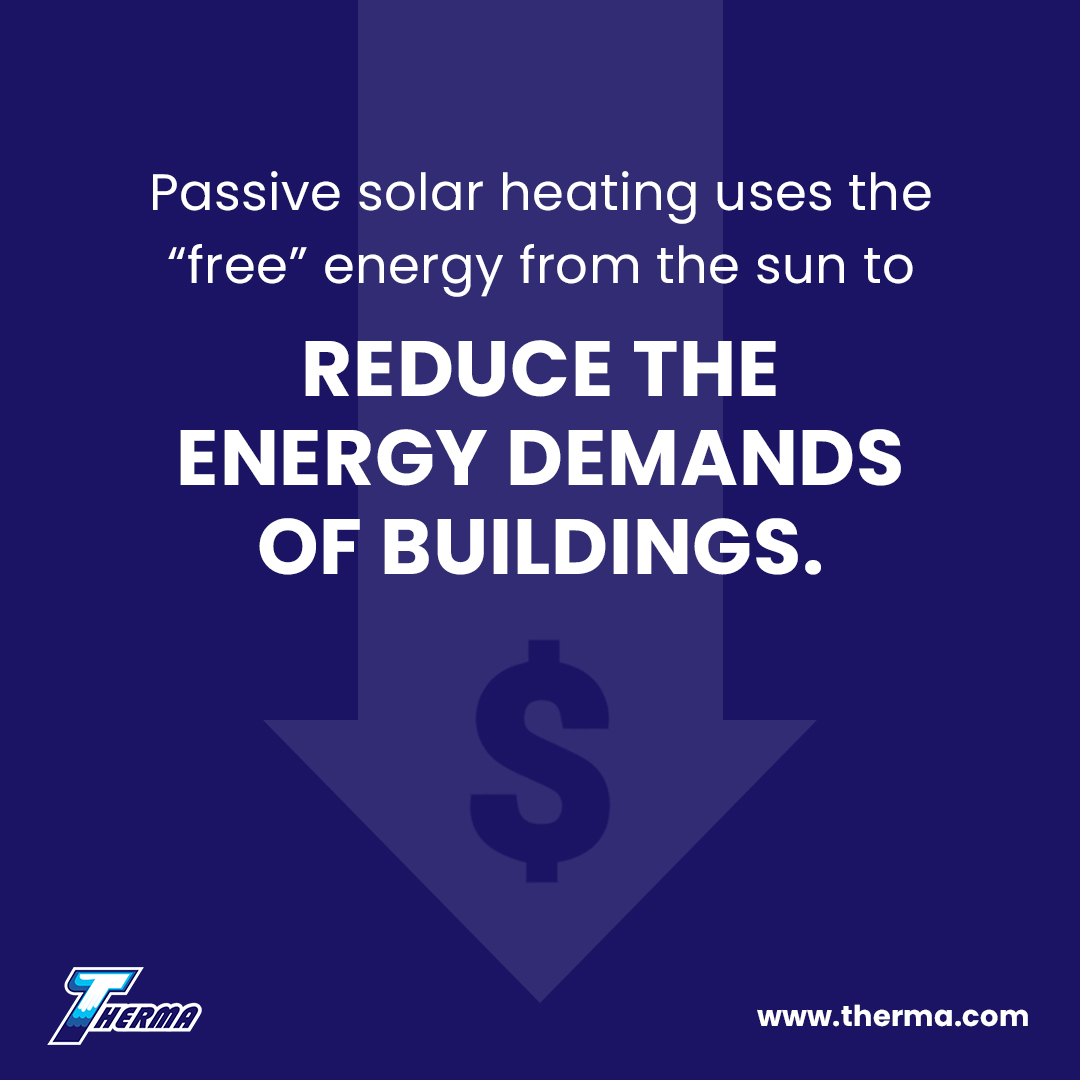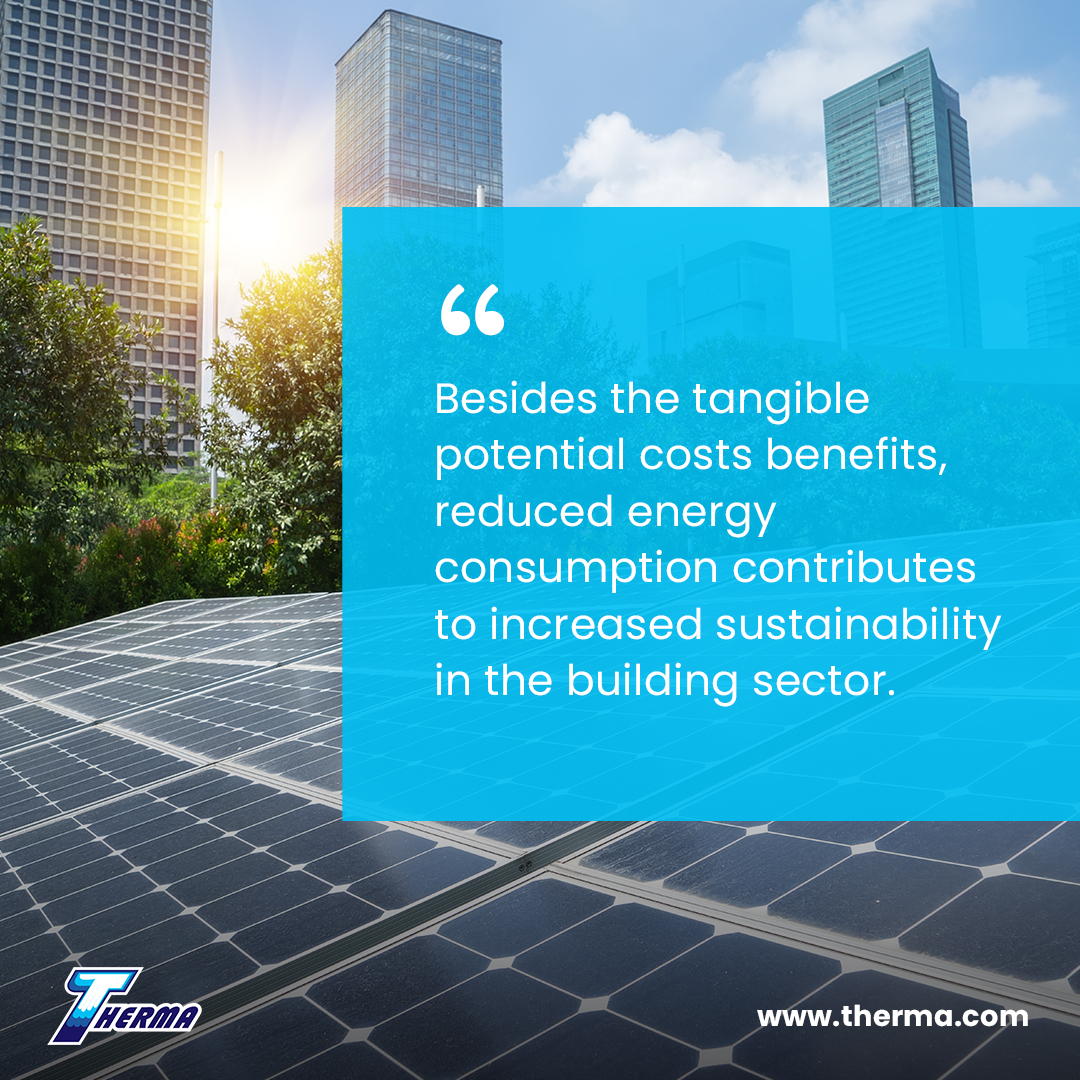Passive solar heating uses energy from the sun for temperature control in buildings. These heating systems make use of the energy transfer and storage properties of building materials and air to utilize solar energy in simple systems that require no mechanical control apparatus, have minimal moving parts and require little maintenance.
How does passive solar heating work?

The basic components of a passive solar heating system are operable glass windows and thermal mass. Glass is largely transparent to solar radiation and allows it to pass through the windows unimpeded during the day. The solar radiation is absorbed by the interior structures of the building causing their temperature to increase. These structures are said to provide “thermal mass” since they store the incoming solar energy in the form of heat. The warmed surfaces radiate their own thermal energy largely in the infrared spectrum to which glass is opaque. This means that the incoming solar radiation is essentially trapped inside the building in a phenomenon commonly known as the Greenhouse Effect. As solar energy continues to pour into the building the interior structures and air continue to build up heat. At night, the thermal mass discharges gradually into the building and elevated interior temperatures can be maintained.
When cooling rather than heating is the goal, passive solar systems manipulate the buoyancy effect – the fact that hot air rises – to drive ventilation and circulate ambient air through the building. Thermal chimneys or other carefully designed ventilation features contribute to the effectiveness of this method.
Good For The Pocket, Good For The Planet

Passive solar heating uses the “free” energy from the sun to reduce the energy demands of buildings by reducing the load on traditional heating, ventilation and air-conditioning (HVAC) systems. With space heating and cooling accounting for a significant portion of the total energy use in commercial and domestic buildings there is considerable benefit to be gained from a well implemented passive solar heating system. In addition to climate control, the need for large windows means that buildings incorporating passive solar heating benefit from natural lighting as well, further reducing energy consumption.
Reducing energy consumption has the direct benefit of reducing energy related costs for building owners. In addition, these simple passive systems typically require very little maintenance and maintenance on complimentary HVAC systems is reduced due to the reduced load. In some cases government incentives in the form of tax benefits may be an additional financial advantage.
Besides the tangible potential costs benefits, reduced energy consumption contributes to increased sustainability in the building sector by making buildings more self-sufficient and any reduction in reliance on conventional energy has benefits in terms of emissions from energy production.

A Word of Warning
While simple in principle, this heating systems can be difficult to implement. Careful consideration needs to be given to site selection, including the likelihood of the solar exposure to the building remaining unchanged, building construction and layout (both interior and exterior), insulation and auxiliary systems to complement the solar heating system. To realize the maximum benefit of passive solar heating requires buildings to be designed with this in mind. Some benefit can however be gained in existing buildings through smart modifications that improve exposure to incoming solar radiation.
By Michael Owen, PhD
Michael is a mechanical engineer working in academia. His research encompasses various aspects of fluid dynamics and heat transfer with a strong emphasis on industrial heat exchangers.
Sources:
- http://passivesolar.sustainablesources.com/
- https://www.eia.gov/energyexplained/index.php?page=us_energy_commercial
- http://solarlove.org/benefits-solar-heating/
- http://www.solar365.com/green-homes/heating-ac/pros-cons-direct-gain-passive-solar-homes
- https://www.energy.gov/energysaver/energy-efficient-home-design/passive-solar-home-design







